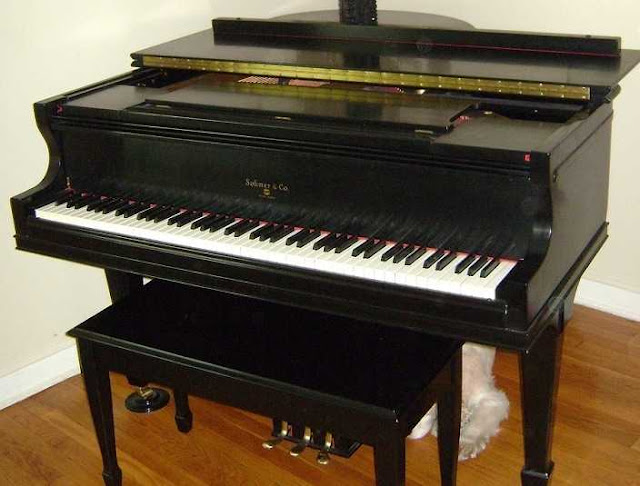What is Ebony?, Functions of it, Uses, Medicinal properties, and What is good for
What is Ebony?
Ebony can refer to several different things depending on the context, but it generally refers to a dark black color or a type of wood.
Ebony Color: Ebony is a dark black color that is often used to describe the color of black skin or hair. It is also used in the context of fashion, art, and design.
Ebony Wood: Ebony is a dense, black hardwood that comes from several species of the genus Diospyros. It is highly prized for its beauty and durability and has been used for centuries in the creation of furniture, musical instruments, and other decorative items.
Ebony Magazine: Ebony was also the name of a monthly magazine that focused on the African American experience. The magazine was founded in 1945 and covered a range of topics including politics, entertainment, and social issues. It was published in 2019.
The nature of ebony depends on whether you are referring to the ebony color or the ebony wood.
In terms of the ebony color, it is a shade of black that is typically very dark and has little or no discernible hue. It is often associated with elegance, sophistication, and power.
In terms of Ebony wood, it is a very hard and dense wood that is prized for its deep black color and fine grain. Ebony wood is typically weighty and difficult to work with but also very strong and durable. It has been used for centuries in the creation of high-end furniture, musical instruments, and other luxury items.
Overall, the nature of ebony is one of strength, beauty, and luxury. It is a material that is associated with high quality, sophistication, and craftsmanship.
Origin of it
The origin of ebony wood can be traced back to several different regions around the world where the Diospyros tree species grow naturally. These regions include parts of Africa, Asia, and South America.
African ebony is perhaps the most well-known and highly prized type of ebony. It comes from several species of the Diospyros genus that are native to sub-Saharan Africa, including Gabon, Cameroon, and the Democratic Republic of Congo. African ebony has been used for centuries in the creation of high-end furniture, musical instruments, and other decorative items.
Asian ebony, also known as Indian ebony, comes from the Diospyros ebenum tree, which is native to India and Sri Lanka. This type of ebony has a slightly different appearance than African ebony, with a more variegated black and brown coloration.
South American ebony, also known as Grenadilla, comes from the Diospyros passiflora tree, which is native to Brazil. It is similar in appearance to African ebony but has a slightly different grain pattern.
In addition to these regions, ebony wood is also grown in other parts of the world as a cultivated crop. However, wild ebony from natural forests is considered the most valuable and sought-after.
Mood of ebony
As ebony can refer to both a color and a material, it doesn't necessarily have a mood of its own. However, the mood associated with ebony can vary depending on its context and how it is used.
In terms of the ebony color, it is often associated with elegance, sophistication, and power. It can also be seen as mysterious and dramatic, especially when used in a bold or striking way.
In terms of Ebony wood, it is often associated with luxury, quality, and craftsmanship. When used in furniture or decorative items, it can convey a sense of timeless elegance and refinement.
Overall, the mood of ebony is often one of sophistication, strength, and luxury. It is a material that is associated with high-end products and is often used to create a sense of opulence and refinement.
Functions of it
The functions of ebony depend on whether you are referring to the ebony color or the ebony wood.
In terms of the ebony color, it is often used in fashion, art, and design to convey a sense of elegance, sophistication, and power. It can be used in clothing, accessories, and other design elements to create a bold and striking look.
In terms of Ebony wood, it has been used for centuries in the creation of high-end furniture, musical instruments, and other decorative items. The dense and durable nature of ebony wood makes it ideal for creating items that are both beautiful and functional. Some specific functions of ebony wood include:
Furniture: Ebony wood is often used in the creation of high-end furniture, such as tables, chairs, and cabinets. Its strength and durability make it ideal for items that need to withstand heavy use.
Musical Instruments: Ebony wood is commonly used in the construction of musical instruments, particularly in the creation of the fingerboards, bridges, and pegs of stringed instruments such as violins and guitars.
Decorative Items: Ebony wood is also used in the creation of decorative items such as sculptures, carvings, and inlays. It's deep black color and fine grain make it a popular choice for creating intricate and detailed designs.
Overall, the functions of ebony are centered around its strength, beauty, and durability. Whether used in fashion, furniture, or decorative items, ebony is a material that is associated with high-end products and a sense of luxury.
Uses of Ebony
Ebony has a wide range of uses due to its beautiful, strong, and durable nature. Here are some of the most common uses of ebony:
Musical Instruments: Ebony wood is a popular choice for the fingerboards, bridges, and pegs of stringed instruments such as violins, cellos, and guitars. It is also used for the keys of woodwind instruments like clarinets and oboes.
Furniture: Ebony wood is often used in the creation of high-end furniture, particularly for the legs, arms, and other structural elements. Its strength and durability make it ideal for items that need to withstand heavy use.
Decorative Items: Ebony wood is also used in the creation of decorative items such as carvings, sculptures, and inlays. Its fine grain and deep black color make it a popular choice for creating intricate and detailed designs.
Flooring: Ebony wood is sometimes used as flooring in high-end homes and commercial spaces due to its durability and unique appearance.
Billiard Cue Sticks: Ebony wood is a popular material for the shaft of billiard cue sticks due to its density, which allows for more precise shots.
Turning: Ebony wood is often used by woodworkers for woodturning projects such as pens, bowls, and other small objects.
Overall, the uses of ebony are varied and depend on the context and the specific qualities of the wood. However, the common thread among all these uses is that ebony is a material that is associated with high-end products, luxury, and quality.
Medicinal properties
While ebony wood is mainly used for its aesthetic and functional properties, there is some traditional medicinal use associated with it. Here are some of the medicinal properties that are traditionally attributed to ebony:
Anti-inflammatory properties: The bark of the ebony tree has traditionally been used to reduce inflammation and swelling.
Anti-diabetic properties: Some studies have suggested that the leaves of the ebony tree may have anti-diabetic properties.
Anti-bacterial and anti-fungal properties: The bark of the ebony tree has been shown to have anti-bacterial and anti-fungal properties in some studies.
Digestive aid: In some traditional medicines, the bark of the ebony tree is used as a digestive aid.
Anti-cancer properties: Some studies have suggested that compounds found in ebony may have anti-cancer properties.
It's worth noting that while these traditional medicinal uses are interesting, they are not scientifically proven, and more research is needed to fully understand the potential health benefits of ebony. As with any natural remedy, it's important to consult with a healthcare professional before using ebony for medicinal purposes.
What is good for?
As mentioned earlier, the traditional medicinal properties of ebony are still being studied, and more research is needed to determine its potential health benefits. However, some traditional uses of ebony include reducing inflammation and swelling, aiding digestion, and having antibacterial and antifungal properties.
While the scientific evidence to support these claims is limited, ebony may have potential health benefits as a natural remedy. However, it's important to note that ebony should not be used as a substitute for medical treatment or professional medical advice.
Overall, the primary use of ebony is for its aesthetic and functional properties, such as in furniture, musical instruments, and decorative items. Its strength, durability, and unique appearance make it a highly valued material in many different industries.
There is no evidence to suggest that ebony is harmful when used in its traditional ways, such as in furniture, musical instruments, or decorative items. However, some people may be allergic to ebony wood or may have a negative reaction to its dust when it is cut or sanded.
It's also important to note that the use of ebony wood for commercial purposes has led to concerns about deforestation and habitat loss for endangered species such as African elephants, which are often hunted for their ivory tusks and share habitat with ebony trees. As a result, some countries have implemented restrictions on the import and export of ebony wood to prevent unsustainable harvesting practices and to protect endangered species.
Additionally, it's important to note that while some traditional medicinal uses of ebony have been suggested, there is limited scientific evidence to support these claims. It's always important to consult with a healthcare professional before using any natural remedies or alternative therapies.
In summary, while there are some concerns related to environmental sustainability and potential allergic reactions, there is no evidence to suggest that the traditional uses of ebony wood are inherently harmful.
Summary
Here's a summary of the key points covered:
Ebony is a dense, dark-colored hardwood that is highly valued for its strength, durability, and unique appearance.
Ebony is found in various parts of the world, including Africa, Asia, and South America.
Ebony is commonly used in the creation of musical instruments, furniture, decorative items, and flooring due to its functional and aesthetic properties.
While there are some traditional medicinal uses associated with ebony, such as anti-inflammatory and anti-diabetic properties, more research is needed to fully understand its potential health benefits.
There are some concerns related to the environmental impact of commercial ebony harvesting, as well as potential allergic reactions to the wood or its dust.
Overall, ebony is a highly prized material that has been used in various industries and applications for centuries.











